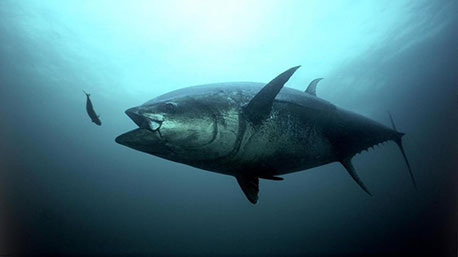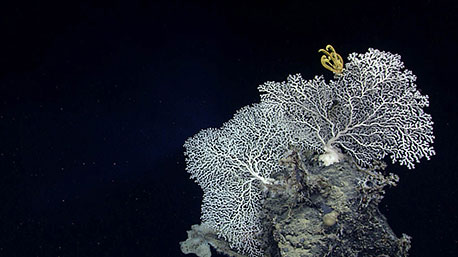Gulf of America Mesophotic and Deep Benthic Communities Restoration
Mesophotic and deep benthic communities are vast and complex ecosystems on the ocean floor that are foundational to Gulf of America (formerly Gulf of Mexico) food webs. Mesophotic benthic communities are found at water depths where light levels are low. These habitats support many species of corals and associated animals, including fish, anemones, sponges, and sea cucumbers. Deep benthic communities are found where there is no light. These species provide shelter and food for many animals, including starfish, sea urchins, fish, and crabs. Deep-sea corals are slow growing and can live for over 1,000 years.
Areas of Focus
We are working on a collaborative set of projects to better understand and restore these ecosystems impacted by the 2010 Deepwater Horizon oil spill. These projects focus on seafloor mapping, ground-truthing, habitat modeling, and coral propagation, with the overarching goal to improve our understanding, inform better management, and ensure resiliency of mesophotic and deep benthic communities.
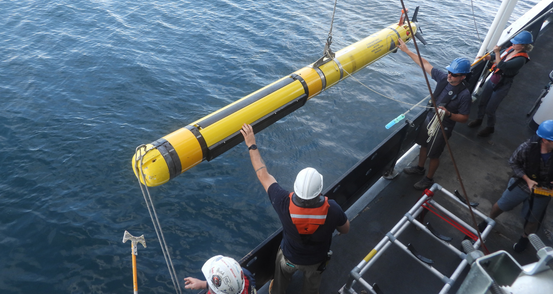
Mapping Ground-Truthing and Predictive Habitat Modeling
We will carry-out high-resolution mapping efforts to determine the abundance and distribution of mesophotic and deep benthic communities across the Gulf of America, and to refine predictive models aimed at improving the effectiveness and cost efficiency of future restoration and seafloor mapping initiatives. We will also provide data on depth ranges, densities, and distributions of specific coral species.
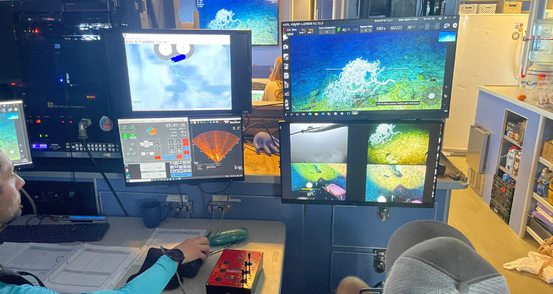
Habitat Assessment and Evaluation
The life histories, diversity, and population structures of mesophotic and deep benthic community species in the Gulf of America are not well understood. Our research will fill those knowledge gaps, determine baseline conditions, and characterize key community conditions at both injured and reference sites.
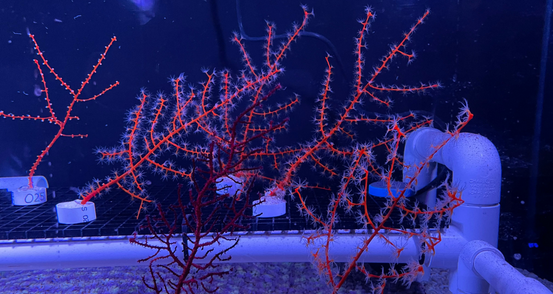
Coral Propagation Technique Development
The most direct approach to restoring mesophotic and deep benthic communities is to facilitate the growth of new corals of the same species as those damaged by the oil spill. This project aims to develop methods and techniques for effective enhancement of coral recruitment and growth that can eventually be implemented at a large scale for restoration. We will use remotely operated vehicles to sample and survey the seafloor, and to collect live coral fragments for husbandry and propagation at partner labs.

Active Management and Protection
This project will support the protection and management of mesophotic and deep benthic communities through education, outreach, engagement, and direct threat reduction. Project activities include engagement with natural resource managers, education and outreach programs targeting resource users and the public to increase awareness of these habitats, and reducing threats to MDBC habitat through activities such as mooring buoy installations, removal of invasive species such as lionfish, documentation and removal of marine debris, and more.
Project Implementation
Explore the Mesophotic and Deep Benthic Communities 2022 Expeditions StoryMap for more detail on 2022 cruise project objectives and accomplishments.
Background
In 2010, more than 770 square miles of deep-sea habitat and four square miles of mesophotic habitat were damaged by the Deepwater Horizon oil spill. These projects were developed by the Open Ocean Trustees as part of the Deepwater Horizon Natural Resource Damage Assessment. Project implementation is led by NOAA and the Department of the Interior using settlement funds dedicated to restore resources injured by the oil spill.
In Photos
Our Work in the Gulf of America
Visit our Partner Websites
Featured Stories

